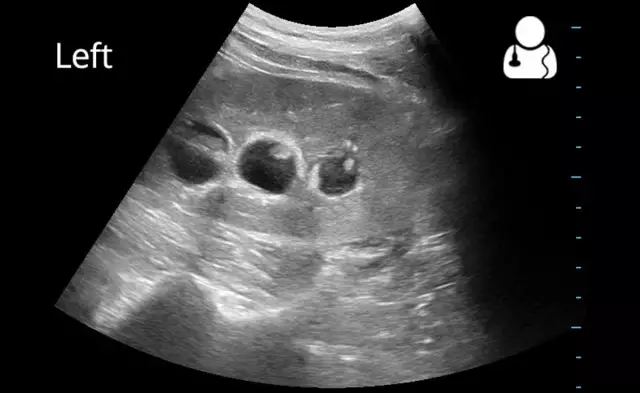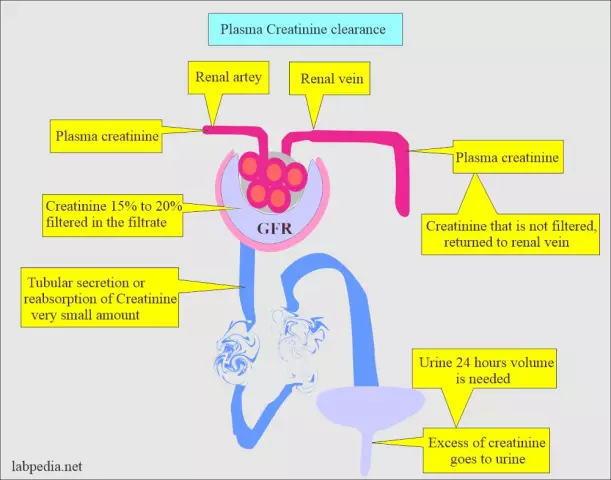- Author Curtis Blomfield [email protected].
- Public 2023-12-16 20:44.
- Last modified 2025-01-23 17:01.
Creatinine is the end product of nitrogen metabolism. This indicator allows you to track the function of the kidneys and muscles of our entire body. By the level of this product (this requires a blood test for creatinine), one can judge the excretory function of the kidneys and the state of muscle tissue. It is formed in the muscles, then excreted directly into the blood and excreted from our body by the kidneys along with the urine.

The simplest method for detecting many diseases is a blood test. Creatinine in women (its level) is slightly lower than in men (its amount ranges from 45.5-81.3 µmol/l, in men - 61.3-105.2 µmol/l). Therefore, the indicators will be different depending on the gender. Increased creatinine in men because they have more muscle mass (and in children it is generally 26.0-61.5 µmol/l).
Causes (main) of increased creatinine:
- Normally, creatinine is elevated in many athletes (a large amount of muscle mass), in those people who eat a large amount of meat food, take medications ("Ibuprofen", "Tetracycline","Cefazolin").
- Acute renal failure. There are many causes of OOP. The most common: shock conditions, large blood loss, poisoning with nephrotoxic substances, acute kidney disease, mushroom poisoning, bilateral kidney injury. The main symptoms of acute renal failure are anuria (lack of urination), nausea, vomiting, loss of appetite, lethargy, but the main symptoms are the symptoms of the disease that led to acute renal failure.

- Elevated creatinine also when a large mass of muscle fibers is destroyed (for example, with prolonged crush syndrome). During damage to our muscles, a large amount of creatine is released, which enters the systemic circulation, and the kidneys do not have time to quickly remove it from our body.
- Hyperthyroidism also has elevated creatinine. The pathogenesis is based on increased breakdown of muscle fibers under the influence of excess thyroid hormones, and increased muscle autolysis leads to an increase in creatinine levels.
When detecting elevated creatinine in the blood, first of all, it is necessary to exclude various kidney diseases. For this, a number of analyzes and functional tests are carried out. An important test that makes it possible to determine kidney function is endogenous creatinine clearance (Rehberg's test). It is this test that is a more effective method for determining the functional state of the kidneys in comparison with a simple measurement of blood creatinine levels.

Bblood creatinine levels begin to rise when more than 50% of nephrons are affected, and clearance changes long before the increase in blood creatinine.
Thus, it is thanks to this test that this disease can be diagnosed even at the preclinical stage and gain precious time for successful treatment.
It is possible to reduce the level of blood creatinine only by eliminating the cause of its increase, since this increased rate is only a symptom of the disease. Some reduction can be achieved with a protein-free diet.






